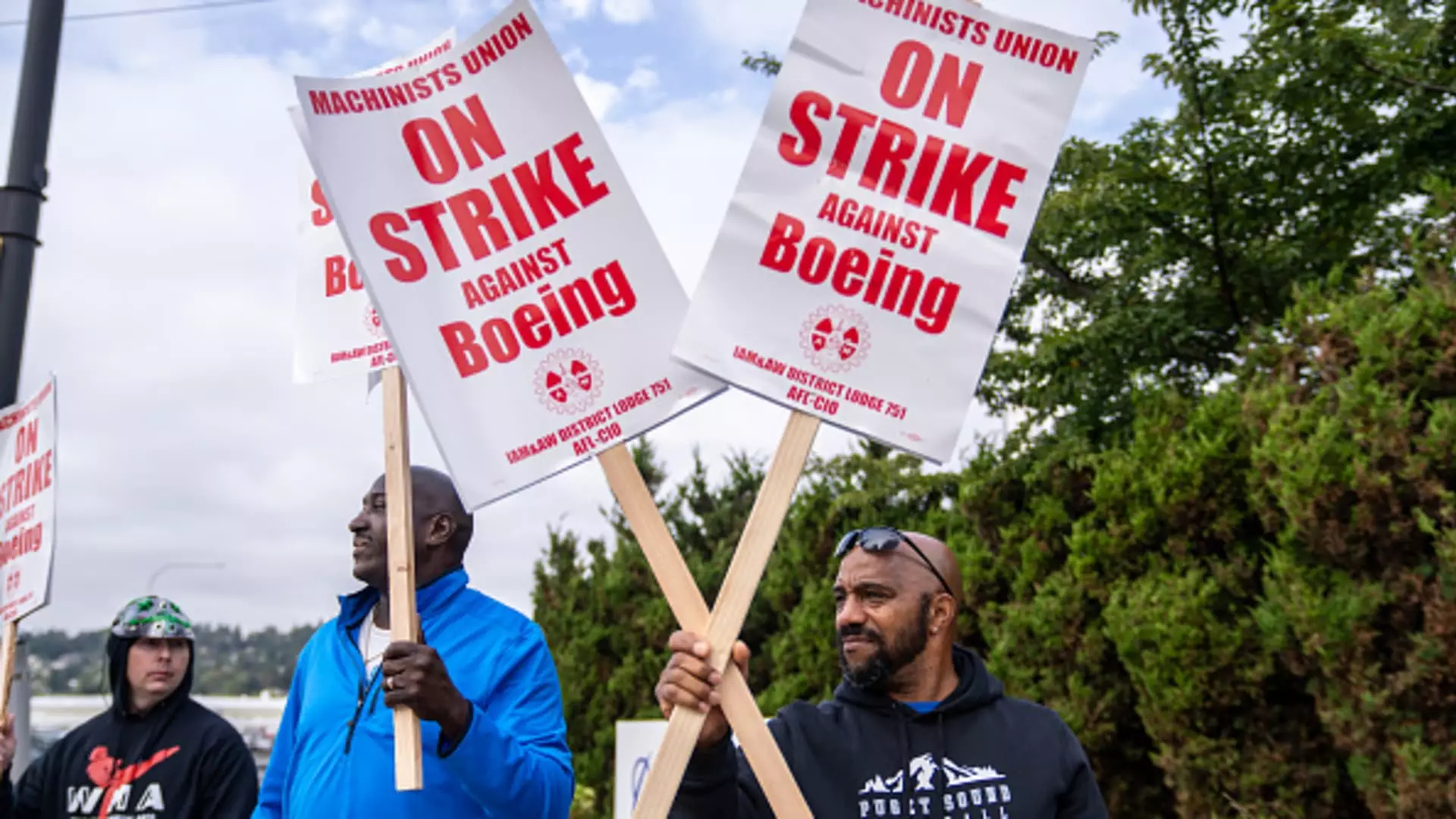Over a month has passed since a significant number of Boeing machinists, exceeding 30,000, launched a strike after a decisive 95% rejection of a proposed union contract. This labor action has intensified ongoing pressures on Boeing, particularly since Kelly Ortberg, the new CEO, assumed leadership tasked with steering the company through its myriad challenges. The ramifications of this industrial action are profound, with S&P Global Ratings estimating that Boeing is incurring losses exceeding $1 billion monthly due to halted production across its facilities, especially in the Seattle area.
The backdrop to this strike is troubling; it comes after a year marked by crises, including an alarming incident involving the 737 Max. This historical context amplifies the urgency of resolution, as the company has been reeling from two catastrophic crashes linked to the Max series. Presently, this labor dispute has exacerbated Boeing’s fragile financial situation as airplane production stalls and resources dwindle.
The strike has led to a stalemate between the International Association of Machinists and Aerospace Workers (IAM) and Boeing. The company rescinded a previously bolstered offer that the union had dismissed, further complicating matters and raising questions about future negotiations. As discussions have faltered, the tension is palpable, with accusations flying from both sides. Boeing has accused the IAM of bad faith negotiations, while the union, represented by Jon Holden, criticizes the management for perpetuating outdated strategies focused on intimidation.
The struggle for resolution has evolved into a multifaceted battle. While some experts, like Cornell’s Harry Katz, speculate that Boeing may need to improve its financial offer to the machinists significantly, the future of the union’s demands, including a restoration of the pension plan, appears bleak. This impasse indicates that both parties are entrenched in their positions, raising concerns about the length and implications of the strike.
As the strike drags on, the repercussions are not limited to union members alone. Boeing’s workforce has been affected significantly; the machinists lost their health insurance and paychecks, mimicking the difficulties of past strikes. However, unlike the extensive layoffs during the 2008 strike, current conditions seem to provide alternative job opportunities for workers, as local contract work, like food delivery and warehouse jobs, have emerged.
In a shocking move, Ortberg announced impending layoffs across the company, projecting a 10% reduction in the workforce. This decision follows the company’s continued struggles to maintain production lines intact, with further setbacks in delivering critical aircraft models. The scope of these cuts coupled with an anticipated loss of nearly $10 per share in the third quarter paints a grim picture for Boeing’s financial health. The company has not seen profitability since 2018, and industry analysts are beginning to express concerns that these labor issues may exacerbate an already precarious situation.
Boeing’s stock has plunged 42% this year, reflecting the market’s response to ongoing challenges and the potential for downgrade warnings from credit rating agencies. Analysts forecast that if production doesn’t rebound promptly, Boeing risks dragging down the industry as a whole, including its suppliers. For instance, Spirit AeroSystems, an essential player in Boeing’s supply chain, is considering furloughs due to Boeing’s ongoing struggles.
In the context of these challenges, Ortberg’s leadership is under scrutiny as he prepares for his inaugural earnings call. The stakes are high; repeated failures may deepen investor distrust and destabilize the company further. Analysts are speculating potential equity raises, estimating the need for as much as $15 billion to stabilize Boeing’s financial standing.
Meanwhile, the broader implications of the strike extend into the aerospace supply chain, with fears that instability at Boeing could propagate challenges through smaller suppliers. The uncertainty surrounding production schedules and financial stability protests an ominous outlook for the aviation sector at large.
Boeing currently faces an intricate web of challenges — from labor disputes and financial disasters to leadership accountability. The machinists’ strike signifies deeper issues within the company’s operational framework and highlights the urgent need for adaptive leadership in crisis management. As Ortberg navigates this tumultuous landscape, he must find a strategic balance between addressing labor demands and stabilizing the company financially. Only time will tell if Boeing can rise from its current setbacks and regain its footing in an industry that demands both innovation and resilience.


Leave a Reply